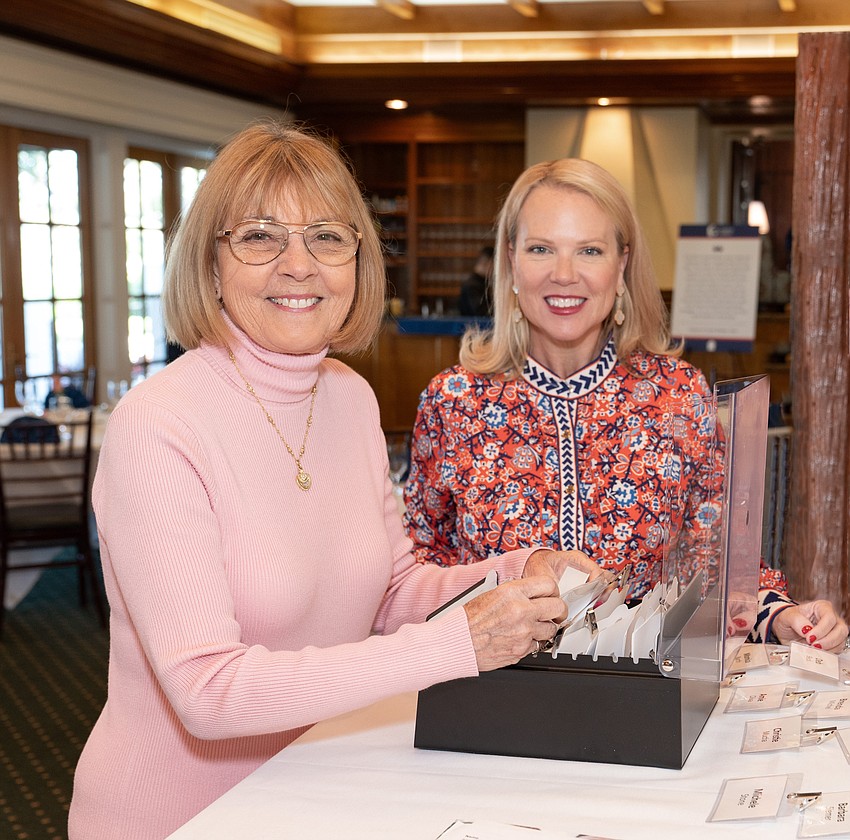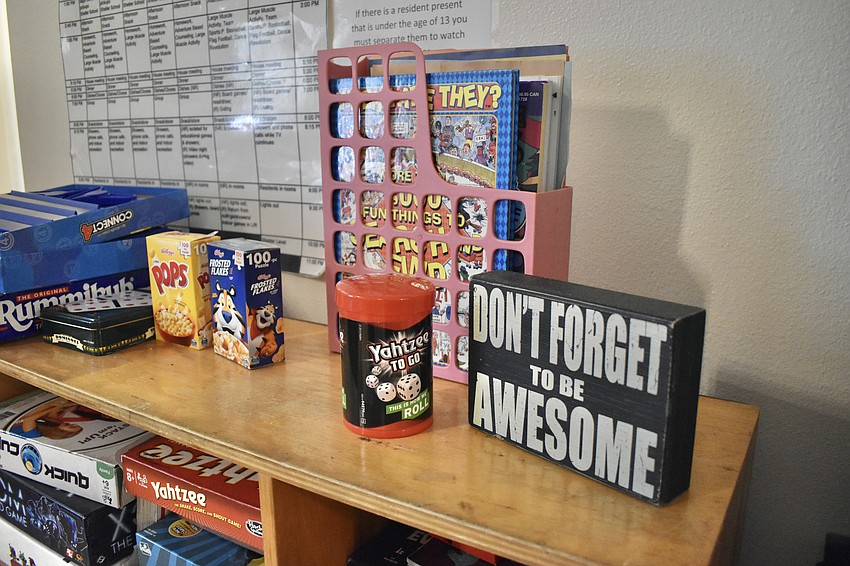- April 30, 2025
-
-
Loading

Loading

Jacqueline House said that while it can be difficult for every nonprofit to get the word out about its services, for Safe Children Coalition, this is especially true.
"I think that unless you have occasion to use our services, it's almost an invisible safety net in the community," said House, who is vice president of communications and community engagement with the organization.
That is why she is grateful for the partnership behind the recently announced $500,000 Gift Match Challenge, which brings together philanthropists Bob and Joan Geyer and the Gulf Coast Community Foundation, in support of Safe Children Coalition's capital campaign for its Youth Shelter.
The facility is the only shelter for homeless teens in Sarasota and DeSoto counties, and also serves teens from Manatee County, with many of its residents experiencing a mental health crisis or having a parent who is unable to cope with their behavior.
House believes the match will accomplish more than just accelerating construction on the new facility, which will replace the current temporary one.
She thinks it will also bring about more awareness in the community at large, of the issues many teens face.
“I think we're going to gain new foster parents, we're going to gain people who want to volunteer to provide respite for foster parents who don't get it all that often because they are caring for children," she said. "I think we're going to discover what the other impacts are as we get closer to finishing the project."
Currently there's a great need for a safe place for teenagers to be, House said.
She said the Safe Children Coalition has observed a holdover from the impacts of isolation during the COVID-19 pandemic, as well as issues caused by pressures from social media.
There has been an increase not only in the number of youth needing services, but an increase in the severity of behaviors being exhibited, she said.

Yet the need can't be met without the involvement of the community.
“I think there's a there's a part to the funding, that people think that the government just does this,” Joan Geyer said. “This is a community, and it's incumbent upon us to make sure that we help our communities to be healthy as possible.”
Jennifer Johnston, director of community leadership from Gulf Coast Community Foundation, said the foundation was glad to partner with the Geyers for the initiative.
The Youth Shelter has been first or second in utilization out of the 16 shelters in the Florida Network, in excess of contracted bed days, and it is hoped that the new gift will help alleviate its waitlist.
According to House, the amount raised is now nearing the 70% mark of the estimated costs of construction.
The goal of the shelter is to serve as a preventative for foster care and to reunite kids with their families through individual and family counseling, with a typical stay being about 30 days.
In the case of substance abuse problems or severe mental health issues, SCC will look for other long-term residences for that child that will prevent them from entering the foster care system.
Most children who reside at the shelter have chosen to take up residence there. Children or parents can knock on the door, or children may be ordered there by the Department of Juvenile Justice.
The current temporary facility only serves 12 kids at a time.
However, the new facility will expand that number up to 20, which equals 200 a year and 3,000 bed nights.
Beyond the capacity, however, creating a place where children have dignity has also been at the forefront of the planning.

“There is an effort to make it not be institutional, and the staff really takes pride in it feeling more like a home,” House said of the new facility plans. “This is not a place that feels like you're confined or contained. It really feels comfortable."
Geyer, who has been involved in child welfare and served as a guardian ad litem for seven years, said she likes that the building is designed for a specific purpose.
She said those who understand the needs of children, and who have experience in that area, have designed a facility that is in the interest of the best use, keeping kids safe and maintaining confidentiality.
As the organization is not permitted to house residents more than two years apart in the same room together, the new space will help significantly.
Their previous facility contained two large rooms with 10 beds on each side, while the new facility will contain eight double rooms and eight single rooms.
New to this layout, all of the residential areas are located away from the intake area, helping maintain privacy and confidentiality.
The common room will be expanded with more room for house meetings and group counseling, as well as additional kitchen space to offer residents a teaching kitchen.
Some features will be adapted from The Academy at Glengary in South Sarasota, where Joan Geyer is president of the board of directors.
“It’s something that you can do quickly, and feel good about, and then eat it," Geyer said. "So, it has it has a therapeutic effect. I would think for the kids, it feels a little bit more homey."
The outdoor area will also feature an outdoor recreation area and basketball court.
House emphasized that the importance of the building comes from the dedicated staff, something to which the organization can turn its attention thanks to the funds for the building provided by the matching challenge.
The dedication staff require is enormous, House said.
“This is a calling for them,” she said.
As the goal of the shelter is for kids to return home, one aspect of their lives must be kept constant: their schooling. Wherever a child goes to school, staff will drive them there each morning.
Staff also serve roles like keeping kids on a schedule, supervising and escorting them throughout the day and performing bed checks every ten minutes at night.
Charles Harris, who has served as director of residential programs with Safe Children Coalition for seven years, and with the shelter for 14 years, finds himself repeatedly drawn back to the role.
He said there are dramatic changes that will be observed in children's behavior after their time in the shelter.
One is that many kids find that they actually prefer to abide by the more structured environment it offers.
"The kids get acclimated after a time of being here; they get used to waking up at 5:30 and making their beds, and it becomes second nature," he said. "So when they go home, they just do it when they get home. That's a lot of the feedback that we get."

Staff also work to improve kids' behavior, using a point system that allows them to earn points, but not lose points. The requirement that they turn in their cellphones also makes a difference, said Harris.
He said many kids have not learned coping skills outside of turning to a phone or tablet.
"What we try to do is replace that cell phone and give them real coping skills, internal coping skills that they can use," he said. "You see them come out of their shell and they learn how to interact."
What keeps him returning to the role is the impact he sees on kids who have left the shelter.
"If you can plant a seed, then you see it grow and blossom, and they call you, and come back, and you'll be at Publix shopping and you'll hear 'Mr. Charles,' and you're looking at one of the kids."
However, he also noted that the home has the ability to change a family dynamic, impacting generations further on.
“I think what's really special about Safe Children Coalition is no child is turned away,” Johnston said. “In our community, there is no other shelter opportunity, so I think we're really lucky to have the incredible staff, Charles and others in the youth shelter, who are able to build relationships and provide a continuum of services, both to the children and to their families.”